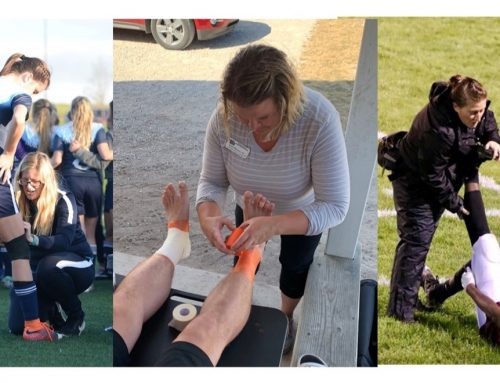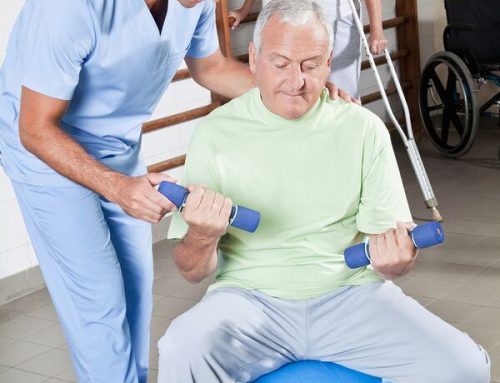Jeff Samyn PT, OCS, CSCS with Northern Michigan Sports Medicine Center
WHAT SHOE SHOULD I WEAR?
The most common question I get from runners looking to reduce their chance of injury or improve their performance is ‘What kind of shoes should I buy?’. My advice on selecting the best shoe starts with a generalization: every major running shoe manufacturer makes good and not-so-good shoes for a given runner. Depending on the runner’s foot type, stride length, and other biomechanic factors, one runner may do better in a motion control shoe, while another may be best served by a stability shoe.
Early in my career, I tried to keep up on the different models released by the various manufacturers. Once I figured out that this was a fool’s errand, I decided to find some local merchants (like The Outfitter) who had training in how to fit shoes and started sending people there. They are much more capable of staying up to date on the changes in shoe technology, and they can have the customer run in the shoes to make sure they’re comfortable. So, the take home message is to trust the professionals and don’t be afraid to wander outside of your favorite brand of shoe—you might be surprised!
GET SPECIFIC!
The best way to train for a race is to mimic the event you are training for as closely as possible. If your goal is to run a 9 min/mile pace and finish a 1/2 marathon in under 2 hours, a decent amount of your training should be at that pace. If you’re planning to complete a trail run, most of your runs should take place off-road.
The exception to this rule is long-distance runs, mostly those over 10 miles. It would not be wise to run 13.1 miles several times before the actual race because of the damage that starts to accrue in your body at that distance. Most 1/2 and full marathon training programs top out around 11 miles and 22 miles, respectively. Similarly, it is isn’t wise to train with 8-10 mile runs to improve your 5K time.
ARE RUNNERS OVERHYDRATING?
Conventional wisdom used to be that everyone should drink 8-10 glasses (64-80 ounces) of water every day to prevent dehydration. Recent research has determined that this one-size-fits-all strategy is not optimal for people of different shapes, sizes, and activity levels. For example, while a 180 pound moderately active man needs to drink about 63 ounces of fluid during the day, a 125 pound woman only needs about 38 ounces.
Hydration during running and other strenuous sports has come under significant scrutiny lately. This owes to the fact that there have been several deaths from hyponatremia (dilution of sodium in the blood) in the past few years caused by athletes over-hydrating themselves. More rigorous reviews of the research are leading some experts, such as Dr. Mitchell Rosner, MD, of the University of Virginia School of Medicine to rethink hydration recommendations. The new recommendations are simple; let your body tell you when to drink. Drink water or other fluids when you’re thirsty, and don’t force fluids if you’re not.
Symptoms of overhydration may include nausea, clouded thinking, and headaches. In severe cases, symptoms include seizures, severe confusion and even coma. Keep an eye on your race buddies, and stay safe during runs that are longer over 5K or take place in very warm conditions.
SHOULD I WEAR WEARABLE SUPPORTS?
I’ve noticed a trend lately of seeing runner’s start to utilize wearable supports to soothe aching muscles and joints, especially the knee. It makes sense that if a body part is aching, adding some support around it should help relieve the pain. My concern is that these supports may mask the underlying issue. If you’re experiencing body pain that has been present for at least 2 weeks, chances are good that there is a mechanical issue causing the pain.
Just as I wouldn’t recommend taking ibuprofen for weeks at a time to cover up a sprain, the same goes for wearable supports. The best way to tell if discomfort should be evaluated by a medical professional is to answering the following questions: Has the pain been present for more than 10-14 days? Does the pain make you change your stride? Is the pain present when you’re not running? If the answer is yes to any of those questions, it would be wise to speak to your doctor or physical therapist before a small issue snowballs into a larger one.
HOW DO I TRANSITION OFF THE TREADMILL?
Now that mother nature is lifting her ban on running outside, it will be helpful to think strategically as you transition from the treadmill to the road or sidewalk. A treadmill is more forgiving compared to the road, so don’t be surprised if your body is a bit more achy after starting back on the pavement. It is generally a good idea to reduce your running volume by 25% or so to lessen the strain on your joints for the first 1-2 weeks of outdoor running. This is also a great time of year to get into a new pair of running shoes, so get to your favorite local running store for a new set if you have more than 3-400 miles on your current pair.







